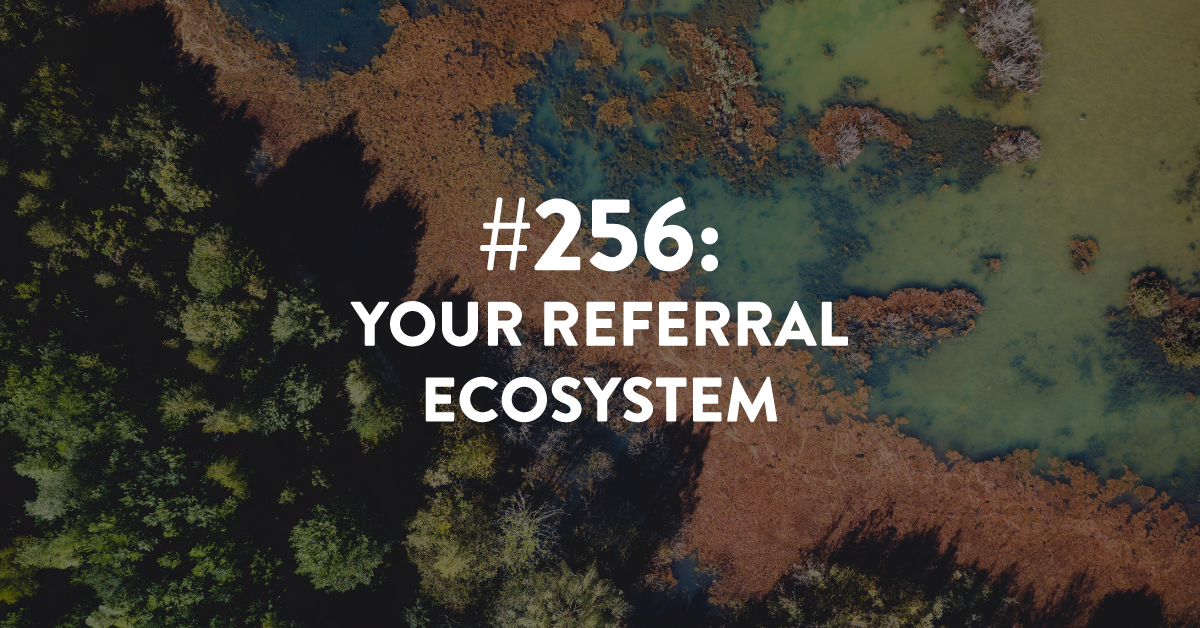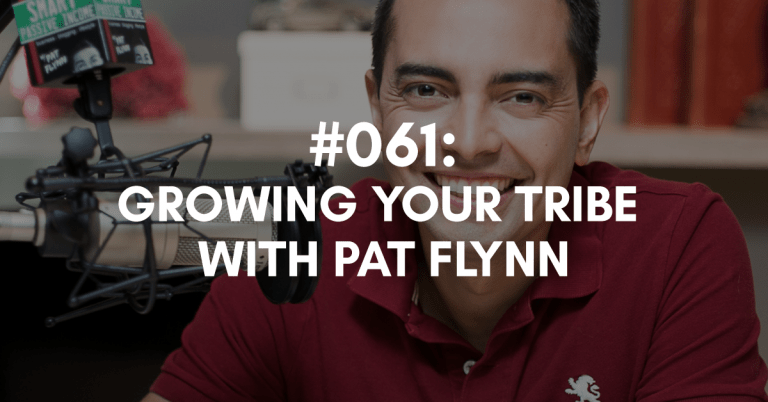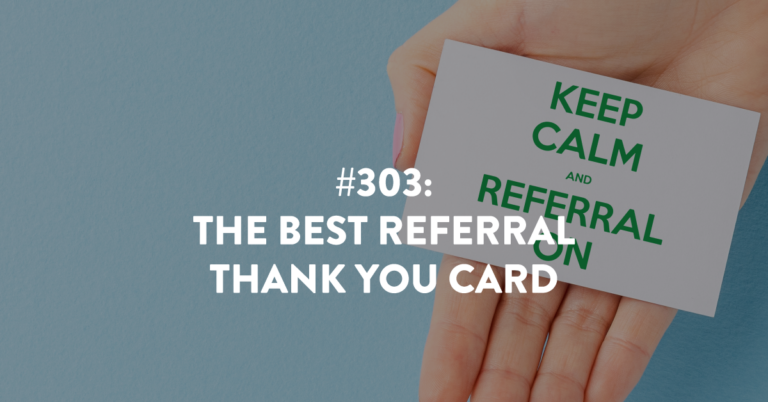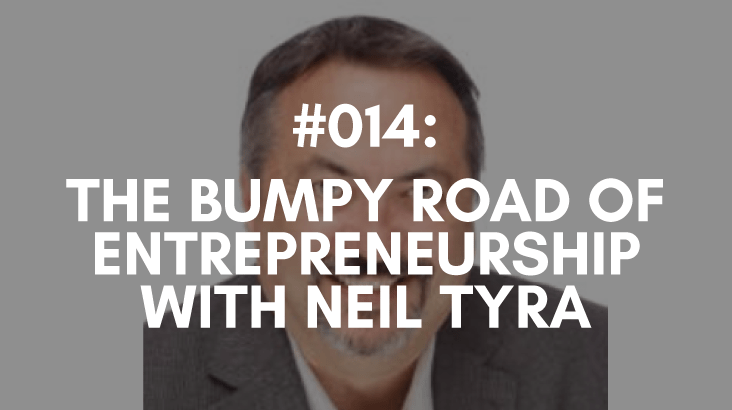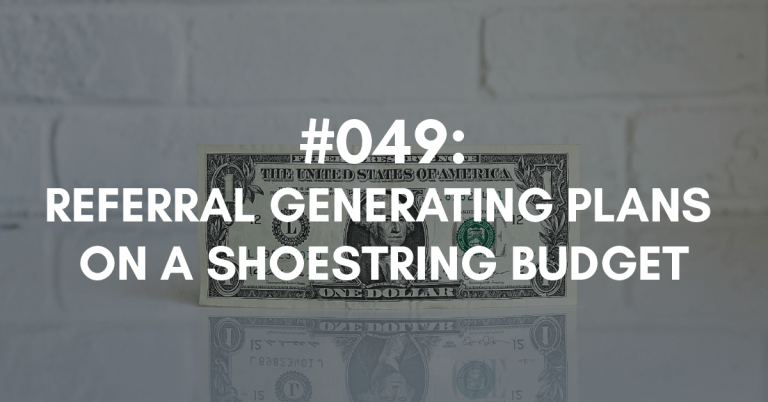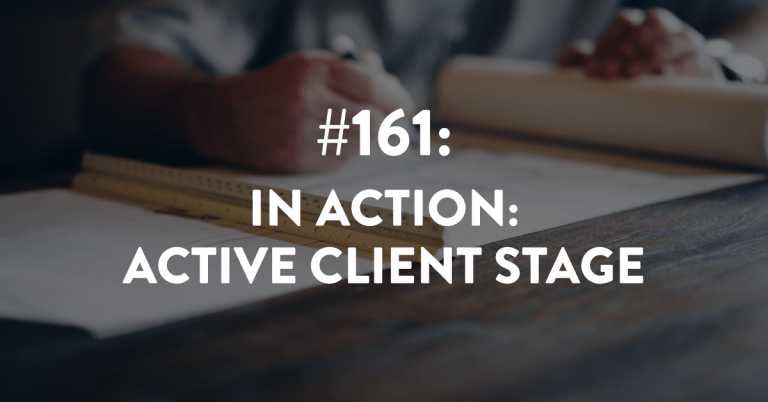Ep #256: Your Referral Ecosystem
Imagine your business as a thriving ecosystem, where every part of it works together to create a sustainable environment for growth. Your referrals work the same way within a referral ecosystem. Many teach there is one way to generate referrals (you know it, the tired and awkward suggestion to “ask for them”). But we know that’s not true. Generating referrals isn’t a hammer where every solution is a nail.
In this episode, we take a deep dive into the referral ecosystem and explore the many ways in which referrals can be generated throughout your business. From identifying specific people to the buyer’s journey with your prospects, we uncover the different parts of your business that can benefit from a strong referral strategy.
Don’t forget your download!
Links Mentioned During the Episode:
Is it time to get serious about joining Building a Referable Business™ (BRB)? First step is to submit your application BRB to see if you’re a fit.
Previous BRB member interviews:
Episode #243 – B2B Lead Gen Company
Episode #228 – Interior Designer
Episode #221 – Supporting Strategies Bookkeeping franchise
Episode #189 – Attorney
Next Episode:
Next episode is #257, and with a title like “Do This, Not That for Referrals”, you know it’ll be good and informative.
Download The Full Episode Transcript
Read the Transcript Below:
Stacey Brown Randall: Have you ever thought about the way you think and execute on referrals in your business as an ecosystem? Well, after this episode, you will.
Hey there, and welcome to episode 256 of the Roadmap to Referrals Podcast, a show about helping you build a referral business, I’m your host, Stacey Brown Randall.
The last four episodes on the podcast, which was episodes 252 through 255, were conversations with current BRB members.
If you’re new around here, BRB stands for Building a Referable Business, and BRB of course, is our coaching program. Through those episodes, I chatted with a business consultant, a real estate agent, a custom book and magazine publisher, and a business and energy coach.
As an aside, if you’re wondering, we will totally be doing this again with other business owners that are in BRB right now. We’ve got a financial advisor, CPA, and attorney on deck. But just keep your ears open here on the podcast for the next time we do a, “What are you learning in BRB series” or as we call this previous one, “A peek inside a referable business.”
So, throughout those interviews, you heard each business owner discuss what they were learning and implementing in their own business. What they are working on is building their referral ecosystem. Let me explain what I mean by ecosystem.
Defined in science as consisting of a community of organisms together with their physical environment, that is how science defines ecosystem. I actually had to look it up because I wasn’t 100% sure of the official definition. So, I looked it up just to be sure.
But if you think about it, your business is the same. Your business is the way you operate, the way you work with clients, the way you bring clients in. When you’re actually delivering on the work, when you are managing your processes and procedures and your communication and your technology. All those things make up your own business’ ecosystem.
And we see referrals as fitting into that ecosystem of your business in many, many ways. In our world, we call it the referral ecosystem, thinking of your referrals from an ecosystem perspective.
And what we mean by that is not a singular approach, but a multi-layered or a multi-strategy approach to how you extract referrals from your business and doing it in ways that are sometimes just part of the process and other times, a specific strategy you’re executing on.
So, with our referral ecosystem, I thought it would be easy, and make it a little bit easier for you. So, for this episode, we actually created a packet you can download. I say packet, it’s not like it’s 15 pages, it’s just a couple of PDF pages.
But we created a download packet because walking you through a referral ecosystem, my friend is very, very visual. We need pretty colors, and you need to be able to see this to grasp what we’re talking about in this episode.
And to help you think through the parts of your referral ecosystem, we’ve created a decision tree. You know that good old decision tree, you know like however you answer one question sends you down the left or the right path? Yeah, that’s what we’re talking about.
So, you’ll want to download the decision tree visual that is a part of this packet because if you were doing anything else, instead of taking notes during this episode, you’re totally going to miss some key information, and that’s okay.
You do what you’re doing, whether you’re on a walk right now, you’re commuting to your office, maybe you’re running the kids somewhere, maybe you’re cutting the grass, I don’t know, maybe you’re sitting at your desk taking notes, which is awesome too.
But most people listening to podcasts are sometimes doing other things where they can’t take notes. So, please make this easy on yourself. With this episode on the show notes page, download the ecosystem packet because it will make your life so much easier. And of course, the show notes page for this episode is staceybrownrandall.com/256.
Let me break down first the referral ecosystems parts. This is where you can generate referrals throughout your business. So, we look at this in a couple of ways.
First, we know that you can generate referrals within your business from identified specific people, we call those referral sources. And your referral sources, they’re either existing because they’ve referred you before or they’re potential, like you’d really love it if they would start referring you. So, one place where you can generate referrals in your business is from identified specific people.
The next place though, in your business where you can really generate those referrals is through your client experience. The next part where you can generate referrals is through the buyer’s journey with your prospects. And then of course, the next place where you can generate referrals is through your networking and your marketing, but in very specific, narrowly focused ways.
So, these sound like, “Okay, there’s four places where I can generate referrals.” There’s actually a lot packed in to those four places but let me give them to you again and then we’ll dig in so you can understand what this looks like.
Again, the visual that goes along with this episode in the referral ecosystem packet at staceybrownrandall.com/256 will make your life so much easier. So, definitely go snag that download. But here they are again, those four parts of the referral ecosystem.
Generating referrals through or from identified specific people, existing referral sources and potential referral sources through your client experience, through the buyer’s journey with your prospects and through parts of your networking and marketing.
Now, if you really think about those, that really touches a lot of your business. It doesn’t touch every single part of your business because referrals are in fact, by nature, sales. They’re business development, referrals are potential new clients.
And so, really, referrals kind of hangs out in your sales strategy, but it permeates itself in other areas. So, you won’t necessarily see referrals being able to generate them through your QuickBooks like that.
So, it’s not like it’s in every area of your business, but these are the key areas of your business where if you are doing the right things with the right — sometimes it’s just saying the right thing at the right moment.
Or having something in that moment as a part of your process, as a part of the email that goes out, or as a part of that meeting that you have, whatever it is, there are things that you can do that will allow you to plant referral seeds in those moments.
So, you start building up this permanence within your business of this idea of referrals, and you do it in this number of different ways, and we break this down by four parts. So, here’s the thing I want you to understand before we dive into this fancy, fancy decision tree.
Referral generation is never singularly focused, it is never going to come in from just one place. There are people out there today who will teach you, “Hey, you just need to ask for referrals from your new clients, and that’ll get you referrals that you need.”
Or you just need to make sure that you are constantly pitching your referral bonus program (it pains me to put those words together in a statement), but you need to pay people who are sending you leads, which are then called referrals, but they’re not because you’re paying for them (soapbox for another day).
So, you just need to constantly be promoting the fact that you pay for people to send you clients, through your “referral program” which is not a thing.
So, yes, can you have one singular focus in your business from how you generate referrals? Sure, and I definitely have clients who go through my individual online self-study programs and they’re like, “I just need this strategy.”
But what I found with people like that when they’re like, “I just need this strategy or this strategy and that’s it, no more,” there’s usually some other things already working in their business.
Other times, I find that people are like, “Hey, things are working, I just want everything to be better.” And then of course, they’re looking for way more strategies, they’re looking for that ecosystem, they want to put into place lots of different things that are working a lot of times without them touching it, like working in the background, helping plant referral seeds and generating referrals.
So, these are the things I want you to think about because we don’t teach referral generation as a singular focus. That doesn’t mean you can’t use it as a singular focus, but that’s just not how we look at things when we are building a referral business because there’s all kind of places where we want to infuse this into your business.
So, for us, it’s never just one strategy, but it’s a multi-layered strategy touching multiple parts of your business, and specifically your business development, which is how you bring in new paying clients.
And of course, please hear me say this, and I’m going to say it twice — you never implement all of this at one time. Let me say this again for the people in the back; you never implement all of this at one time.
So, to help you decide where to start, where to put your focus, we’re going to do a little decision tree. The good old decision tree.
It is the other part of the download, so you’ll want to grab that. So, as I’m asking these questions and you’re answering them possibly out loud in your head or whatever, you’ll want to be able to eventually go back and write down your answer because it’s a pretty in-depth decision tree.
We try to keep the visual pretty simple, but as you look at the visual while you’re listening to this episode, even if you’re listening to this episode now for the second or third time, as you go through this, it’ll make way more sense. Alright, so that decision tree is going to help you decide where you start and where you put your focus, so definitely make sure you download it.
Hey, pardon the interruption: in just two days, May 11th, 2023, I’m hosting a live private training to show you how it all works inside the building a Referable Business Coaching Program, aka BRB. During this live private training, I’ll explain how we strategy stack to get you off to a fast start. How to calculate your ROI and the framework BRB is built from.
To grab your seat to this training, you must complete your BRB application, ASAP, prior to Thursday. The training is specifically for those who want to understand how BRB works, they want to understand how we make the magic happen, and of course, what’s included in BRB.
So, you go to staceybrownrandall.com/referable to learn about everything you receive inside BRB, and then of course, you submit your application by just clicking on the green “apply now” button. You’ll answer a couple of questions, and then you just wait to see if your application has been accepted.
Of course, the link again is staceybrownrandall.com/referable. Complete your application now, and if it is accepted, you’ll receive all the information you need, like the live link of where we’re hosting the training.
Okay, let’s dig into this decision tree. I don’t know why I’m so excited about a decision tree, maybe I’m a little crazy, that’s actually quite possible.
So, let’s dig into this decision tree. Remember of course, if you want to download the referral ecosystem packet, so you actually have the visual pieces and the decision tree, do that now, the download link is staceybrownrandall.com/256.
So, here’s how I’m going to do this. I’m going to start with the first question and work my way down one side of the decision tree based on the answer to that question. And then I’m going to look back around and I’m going to go back down the other side of the decision tree based on a different answer.
So, you’re going to hear one side first and then the next side, I’m not going to jump back and forth, well that would just be confusing for me, which I know then would make it confusing for you. And so, we’ll talk about the things that are all encompassing within this decision tree, but we’re going to go part by part.
So, here’s actually the very first question you need to ask yourself, or you actually need to calculate to figure out are you going to the left side of this tree or the right side. So, the very first question you need to be able to answer is, what is the average number of referrals you receive in a year?
Please remember, a referral is only a potential new client referred to you by someone else. If a client comes back to work with you again, that is a repeat client, they are not a referral. So, a client cannot refer themselves.
So, when you’re looking at your referrals, it needs to be, “Here’s the perspective client’s name, and here’s the name of the person who referred that perspective new client to me,” those names should not be identical.
So, when we are looking at the average number of referrals that we receive in a year, we actually are trying to get up to three or four years’ worth of data. So, if you’re working with me in BRB, this is actually the pre-work that you complete.
Right when you join, you start on this pre-work, it comes to me, I review it, and then we hop on an onboarding call, and we dig into the data because that tells me everything, I need to know about what I want you to accomplish when you’re in BRB.
It’s kind of crazy how one little calculation can do that for me, but that’s what happens when you’ve been doing something for a decade. So, you’re going to need to get the number … it’s a number I’m looking for. Not a range, no ranges, number only.
But it’s the number of when you take the number of referrals you’ve received over the last couple of years, and then you average them together, what’s that number? What’s the average number of referrals that you receive in a year?
And so, if you’ve only been in business a year, then you’re just going to work with what you have, your average from one year is what you got. You’ve only been in business for six months, okay, just take that as your average.
But if you’ve been in business 6 years or 12 years, I just need three or four years’ worth of data. And what I need you to be able to do is say, “Here are the people that were referred to me in 2022, here are the people that were referred to me in 2021 and 2020.” And if you want to go back to 2019, awesome, but I want you to use full years.
So, at the time of this recording, we’re talking like when you guys are listening to this, it’s May of 2023. So, I don’t want you pulling the first four months of this year because it would throw off your average of what you typically do in a year.
So, you wouldn’t use the referral number from this year, but you’d look back at 2022, 2021, 2020, and maybe even 2019 if you want to get one more year past or prior to COVID, or maybe not, you don’t.
And then you take the number of the number of referrals each in those years. You guys know how to do an average — you add them together, you divide by the number, it’s three for three years, four for four years, and that gives you an average. The answer to the first question is whatever that number is. So, here’s how we answer this.
Do you average more than six referrals a year, or do you average less than five referrals a year? That’s the demarcation line for if you’re going right side, left side down our decision tree. Is your average number higher than six? Is it six or higher? Or is your average number five or lower?
We’re going to assume right now we’re going to go right down actually the left side of the decision tree, that it is more than six. Your number could be 12, it could be 22, it could be 33, your number is your number, it’s just six or greater.
So, that’s going to send you down the left side of our decision tree. And so, here’s the thing, this isn’t like a typical decision tree where — I mean, it is a series of questions, but sometimes you’ve got to pull some information to actually be able to answer the question as well. So, I want you guys to think about it this way.
So, more than six referral sources, awesome, we’re on the left side of our decision tree. The next thing, the question you’ve got to answer is, do you know who they are? I know that sounds so like duh, but you would be surprised that people don’t.
Now, if you did the calculation to get to your average, then you should have this information. I hope you didn’t guess, please don’t guess on that first question because you don’t know if it’s true, your guesses sometimes are wrong, I mean, it just is what it is.
So, the question is do you know who they are? Do you know their names? If the answer is yes, then you just keep going. So, let’s look at this when the answer is yes versus the answer is no. Actually, let’s start with the answer is no. If the answer is no, guess what? You stop there and you go get the names so that then the answer can be yes. So, no is like a dead end on the decision tree.
So, do you know who they are? Who are your referral sources. So, no is a dead end and it’s forcing you to go back to yes, which means you’re going to make sure you have their names. Because here are the things I want you to understand and the questions you’ll answer when you know who they are; the names of your referral sources, okay, great, if you know who they are.
Which one of your referral sources are active versus inactive? The next thing you’ll start paying attention to is what is your closing ratio? So, your closing ratio will tell you how many of your referrals are you closing. Because if you know who they are and you know who the clients were, the prospects were, you know who became a paying client and who didn’t, but we dig in even deeper to our closing ratio.
So, some of these questions aren’t the answers send you down a different direction, these are all just questions in order.
So, first, “Yes, I knew who my referral sources are.” The next question is, do you know who’s active or inactive? The answer is if it’s no, you got to answer it before you can move on, you’ll see this when you download the visual. Are they active versus are they inactive?
And then the next question is the closing ratio. What is your closing ratio? And that’s really a number, but it leads you into — based on that number, do you have any quality issues? Are you getting referred non-ideal clients that you can’t close into paying clients? That’s why you have a closing ratio issue?
So, if your closing ratio is high, awesome, but if it’s not, do you have a quality issue or do you have a closing issue? Meaning when you’re talking to that prospect that’s been referred to you, do you know the critical couple of questions you’re supposed to ask throughout that process to help them close themselves because they were referred to you? So, you may have a closing issue.
Those are all numbers and they’re all metric-based, it’s always a percentage based. So, you can look at your closing ratio and if your closing ratio of your referred prospects, it’s like over 50%, you may look at that and be like, “I don’t have a quality issue,” or you may dig in and be like, “You know what, I don’t have a quality issue from these seven referral sources, but these four consistently send me non-ideal potential clients.”
So, you have to dig into that quality issue. Is there any quality issues from any particular referral source? And one bad referred prospect does not make a quality issue. We only determine a quality issue when we see repeatedly, they’re referring new people who you cannot work with.
So, from a real estate agent’s perspective, it’s like you’re repeatedly getting referred clients from this one referral source and these people aren’t even interested in buying a house or selling their house, or they literally have no money for a down payment and they can’t get pre-qualified. Like that’s a quality issue.
On the other side though, closing issue is if you’re getting quality ideal clients and you are not closing them, the issue we want to solve could be within your process of closing those referred prospects.
So, at this point, for where we are in this fabulous decision tree is we have got ourselves down to the point where we know that we’re getting more than six referrals in a year, we know who our referral sources are, we can identify them as active versus inactive. And then we’ve gone through and answered the questions about closing ratio. Like what is it? And does that mean we have a quality issue or a closing issue?
Here’s the final question in that part of the decision tree, and that is, do you need more? Do you need more referral sources? And if the answer is yes, well that ultimately aligns with the right side of our decision tree, because you need more.
Now, here’s the thing, you could have 12 or 29 referral sources and think I need more. You could have 62 and think I really need 75. Your number is your number, I’m not going to tell you if you need more referral sources. But on this side of the decision tree, that’s the last question, is do you need more referral sources?
And if the answer to that is yes, of course, then you need to learn how to cultivate new people into referring you. And how you can do that is either through your client experience, though that does take a little bit longer or by actually cultivating identified people that you want to start referring you, which is just a different strategy.
So, let’s go back up to the top of our decision tree. And now, let’s look at the right side of this decision tree, which is you answered, I have less, I have five or less referral sources. So, the ultimate question there becomes it’s very simple.
If you don’t have at least a half a dozen of people referring you now, so you’ve got five or less, maybe you have zero, maybe you have 2, 3, 4, it’s 5 or less people referring you, you have one place you need to go. And that one place you typically need to go is to cultivate new referral sources.
But hang on, because what you may determine, and the decision tree will walk you through this, what you may determine actually is your client experience, like what your clients are experiencing when they work with you isn’t actually making you referable. And that’s the issue you need to solve first before you then start actually looking at and identifying clients and centers of influence that you want to start referring you.
I just had this conversation with somebody who applied to join us inside BRB, and they’re looking at all the metrics within their business and they’re like, “Oh my gosh, I actually need people believing and trusting that I am an amazing person to work with. I need to build up my client experience, I need to make that more referable.”
So, going through the decision tree, and you come into that realization, I would say, great, then the very first strategy I’m going to stack for you inside BRB is our referable client experience strategy. But we will move very quickly into the other strategies that start working a little bit faster.
But if you believe the reason why you have less than five people referring you is that your client experience isn’t all that referable, then that’s where you’re going to start. So, if it’s less than five people referring you, you’re either going to be like, “Yeah, I need to fix my client experience, or I need to learn how to cultivate people to start referring me that have never done it before.”
You guys heard this in episode 253 when we talked to Fabi, and she’d gotten 15 referrals in the first 90 days of this year, and four of those referrals came from brand new people referring her that she had started to cultivate through our process.
So, it can work, and for a lot of people it can work quickly. It doesn’t do that for everybody, it’s not a guarantee. But the idea there is, is that it’s looking at this and deciding where’s it all not working within my business and where are the pieces and parts I need to fix?
Now, as you’re going through this decision tree, things are coming out of this which fit into (and as you work through the decision tree) — which fit into those parts that I talked about earlier for that referral ecosystem, which are you getting referrals from identified specific people?
Those are your existing referral sources or potential referral sources. It’s kind of where the decision tree starts. But then there’s also are you getting referrals through your client experience. So, the question is, do you feel like you have a referable client experience?
Now, if you’re on the left side of the decision tree, you’ll notice at the bottom, after you’re like, “Hey, do I need more referral sources? Yes, or no?” The next question is, do you need to tighten up or make better your client experience to make it more referable?
Because we can always be improving, even if we have a bunch of people referring us. Maybe not, you may be like, “Nope, but I’m good there, check the box.” So, when we think about this ecosystem, we look at it, no matter if you’re getting a lot of referrals or not, we look at everything.
But as you’re going through this process, you actually heard me talk about those four main places. The four main parts of the ecosystem where we see referrals being generated, and they actually talked about them throughout that decision tree.
So, as you answer the questions in the decision tree, you’ll notice, “Hey, actually I have a closing issue with the prospects that are sent to me, that’s my ability within the referral ecosystem, to generate referrals through the buyer’s journey with my prospects.”
Now, what’s not included on the decision tree or what we’d like to say, once you get all this figured out, then you may want to look at some additional strategies, which could be what you’re doing when you’re networking, what you’re doing when you’re on social media.
And so, there are other things that we sprinkle in that you would not see on the decision tree because those are hard tactical questions. But then there’s these additional strategies, sometimes, we call them situational and sometimes they fall into the next level group of the things that we want to make sure that we’re doing for planting referral seeds in different aspects of our business.
So, here’s the thing. I know this episode is like, “Whoa, whoa, I just drunk from the fire hose.” This is why I’m asking you to please download your little referral ecosystem packet so you can get the referral ecosystem, like the overview, the visual, and then of course, you can also get the decision tree and understand how we work ourselves into deciding where to start. That is what the decision tree is ultimately doing for you.
And so, that’s important as you walk through all this that you know that. So, again, don’t forget, you got to go download the referral ecosystem like worksheet, packet, whatever you want to call it. And the show notes page where you can get that is staceybrownrandall.com/256.
And I started this episode by talking to you about the four-part series, we did a peek into a referable business. The four-part series we did where I talked to current BRB members about what they’re learning, what they’re implementing, their aha moments, and of course, their thoughts on being a part of BRB, and those were episodes 252 through 255.
But if you’re interested in listening to other episodes where I talk to BRB members, you can check out episode 243 and that’s when I talk to Mark and Lori, they’re with a B2B legion company and we actually talk about referrals and delegations. So, if you have a team or an assistant or a coordinator or somebody who can come alongside you as a business owner, that is a great episode you’re going to want to listen to.
Then we’ve got episode 228 and that’s where I talked to Denise, an interior designer about the intentionality behind her building her referral strategy slowly and steadiness. So, that she could handle increased capacity because she did double her referrals and her time in her first year within BRB. We’ll see what she does this year as well.
And then of course, you can listen to episode 221 where I talked to an owner of an expense reduction analyst franchise and a supporting strategies bookkeeping franchise about their success that they had after implementing strategies.
And then we’ve got episode 209 where I talked to a jewelry concierge and episode 204, where I talked to a business consultant. And then last one promise, episode 189 where I break down five years of referral success, following my methodology with an attorney who’s been with me actually six years now. So, that one’s a little bit older, I got to get her back on, and we got to do another one to break down all the goodness that she has put into place by using our strategies.
So, those are just some additional episodes. If you want to go listen to people, business owners just like you who are having the transformation you deserve to have, go listen to their episodes, get inspired. And then of course, if that means it’s time for you to at least apply to Building a Referable Business so that you can then have all the information to make the decision to join us inside BRB, the application is the first step, because first, you got to be accepted.
Then if you do it now, you can attend our private live training on May 11th, and then you can see how it all works together, and then you’ll have all the information you need to make the best business decision for yourself right now.
So, again, all the links to those episodes will be listed on the show notes page plus the downloadable packet that you can get for your referral ecosystem at staceybrownrandall.com/256, that is the show notes page link for this episode.
Coming up next week as episode 257 and with a title like Do This, Not That for Referrals You Know. It’s going to be good and informative.
Until then, you know what to do, take control of your referrals and build a referral business. Bye for now.

